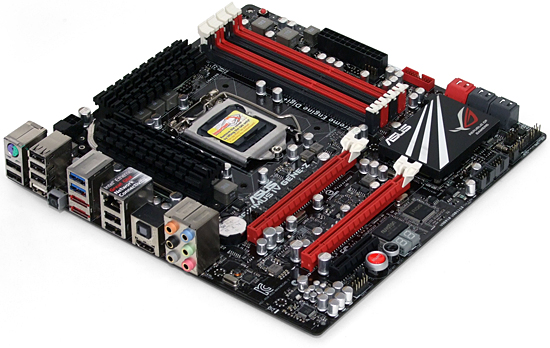Building A Liquid-Cooled MicroATX Gaming Monster
You don't need a massive case to cram in tons of computing muscle. With a little help from a few manufacturers, our excessively-overclocked GeForce GTX 580 SLI build is small enough to sit atop most desks (and smoke our $2000 SBM machine).
Overcoming Overclocking Ordeals: Asus’ Maximus IV Gene-Z
This editor always tries to keep his Sandy Bridge-based CPU core voltage at or below 1.40 V to assure longevity with above-ambient cooling. That usually means choosing 1.38 V for additional safety factor, though voltage fluctuations on some lower-range boards have occasionally still blown processors up over time. Even more of that built-in “safety factor” was subsequently added to our motherboard round-ups, taking that test voltage down to 1.35 V.
Our most recent System Builder Marathon revealed that an award-winning motherboard simply wasn’t able to cope with the increase from 1.35 V to 1.38 V, and that kind of mistake wouldn’t be tolerated for this build. Asus’ Maximus IV Gene-Z comes with a larger voltage regulator.
Assuming the same amount of current per PWM phase, the Maximus IV Gene-Z’s twelve-phase regulator would surely outpace that of the seven-phase product we had problems with in the SBM. As an advanced overclocking model, we’re actually counting on the Maximus IV Gene to have better-quality parts on each of its twelve phases.
Oh, and of course the board had to support SLI, which it does without breaking the Z68’s support for Lucidlogix's Virtu software and the Intel Quick Sync video enabled by it (even with our display natively attached to the discrete graphics cards).
Most enthusiasts think of microATX as a big, fat compromise. And yet, experienced overclockers are familiar with Asus’ smaller Gene line of “Republic of Gamers” motherboards, which incorporate the same design DNA as the company's full-sized ATX boards. Asus certainly doesn’t think of its product as lacking seriousness, providing a special USB cable that allows the system to be overclocked remotely, on the fly, by another machine system.
It’s also nice to see six SATA cables included with a motherboard that supports six internal drives.
Get Tom's Hardware's best news and in-depth reviews, straight to your inbox.
Current page: Overcoming Overclocking Ordeals: Asus’ Maximus IV Gene-Z
Prev Page The Smaller Footprint: Fractal Design’s Arc Mini Next Page Lightening The Load With Crucial And Seagate


